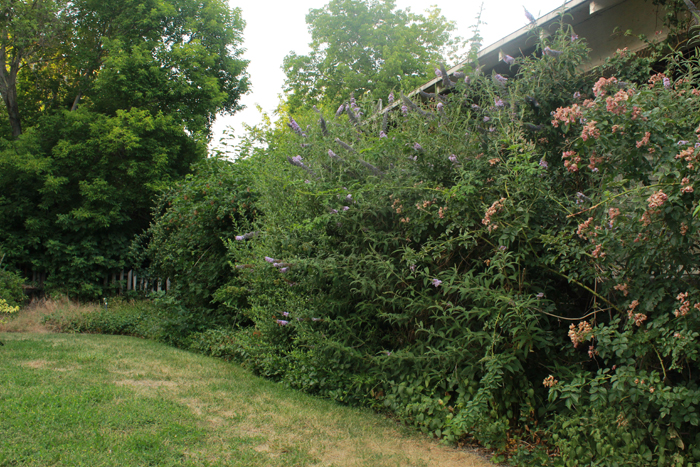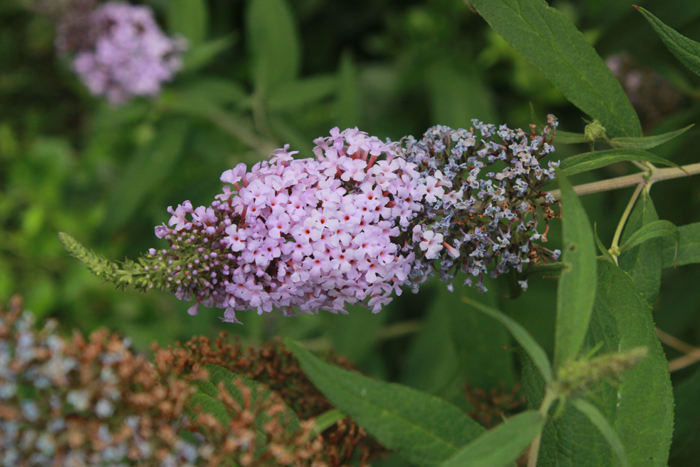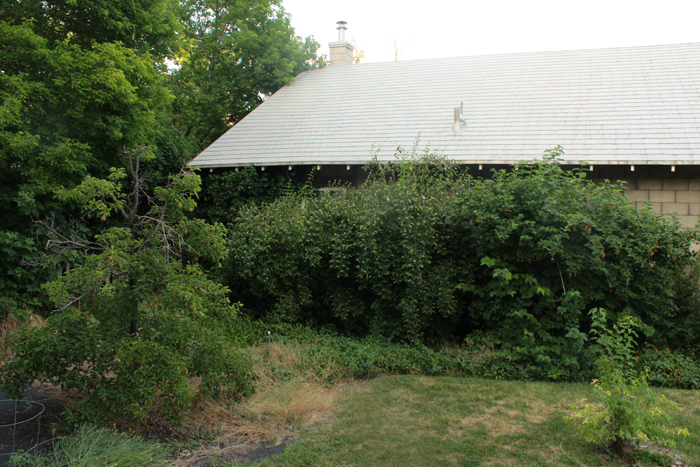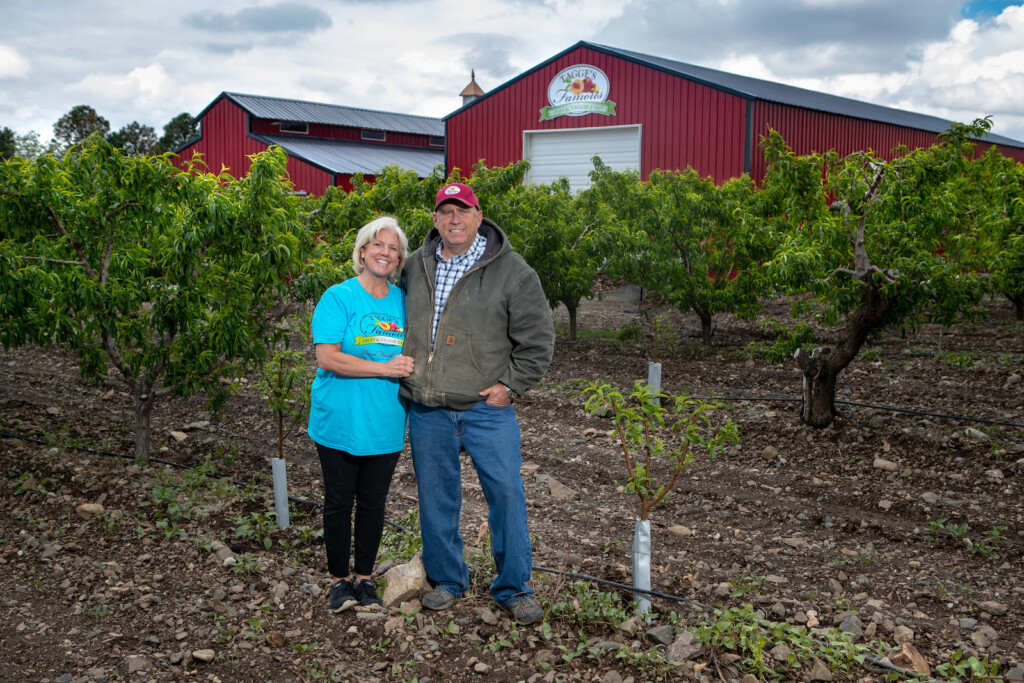
Living in the Salt Lake Valley can sometimes feel like life on some sort of dry and barren desert planet. New neighborhoods often lack old growth trees, so shade is sparse with little green vegetation for the eyes to enjoy. Even in established neighborhoods during the height of summer, the sights include plenty of pavement, automobiles, and chainlink fencing.
Lush, green vegetation just doesn’t grow as abundantly here as it does in other climates in the country. But growing a hedgerow is a sustainable way to create a pleasant oasis of greenery and biodiversity in your residential yard.
What is a Hedgerow?
Hedgerows can be thought of as living fences, offering similar benefits to mechanical fences such as privacy and delineating property lines. Even if your property is bordered by other residences where a fence isn’t exactly necessary, you can still plant a hedgerow and enjoy its many other benefits. And while they function similar to topiary, when grown properly, they offer so much more than ornamental value.
A hedgerow is defined as being longer than it is wide, though there is no required width or length, and each can vary dramatically depending on the site. Hedgerows are made up of a variety of perennial species planted closely together that are minimally pruned so their natural shape doesn’t completely fill out. A row of single species is usually considered a hedge rather than a hedgerow.
Hedgerows planted from seed may take several years to become established, but a row of fully mature plants that are shorter than waist-height is considered to be a border rather than an actual hedgerow. A hedgerow is made up of foundational species like woody shrubs and dwarf trees, as well as supporting species like herbaceous bushes, vines, and groundcovers. A well-done hedgerow features various species that bloom and bear fruit throughout the year.

Benefits for the Home Gardener
When a single element serves many functions, it is said to ‘stack functions’. Hedgerows are wonderful garden elements that stack many functions.
As an alternative to fencing, hedgerows are cheaper, more beautiful, and last longer. There are historic 800-year-old hedgerows living today among countrysides in the United Kingdom. Some have even gone feral, but still provide benefits to wildlife and prevent soil erosion. Once established, they require little to no weeding and minimal irrigation.
Similar to fences, hedgerows demarcate property lines and section off larger pieces of land for separate uses such as animal pasture from recreational areas. But they provide greater privacy than fencing because they tend to be thicker and have the added benefit of dampening noise, making them ideal for noisy urban and suburban areas. Like adding furniture to an empty room, their presence can actually enhance the feeling of roominess in a smaller yard as they act like living architecture.
For the organic gardener, they offer protection from harmful synthetic pesticides and other incoming contaminants used in the neighboring vicinity. Their green biomass filters pollutants entering the property above the soil, while established root zones provide similar benefits for contaminants within the soil.
Established roots also serve to prevent soil erosion and soil quality degradation. Even better, soil quality is actually improved through leaf drop in deciduous species, which acts as an inherent mulch source. Established plants improve soil quality by adding organic matter through natural root die-off and increase the presence of soil mycorrhizae and other microorganisms.
In certain urban microclimates, wind can become a problem when it’s funneled between buildings or homes and ends up damaging garden crops. Even milder wind that doesn’t cause physical damage can still slow plant growth significantly if it’s consistent, because the stomata on the plant’s leaves close up, restricting photosynthesis. Hedgerows serve as windbreaks that protect garden crops.
Thorny species keep mammal pests such as raccoons and deer or intrusive neighboring pets out of your yard.
An edible hedgerow is sometimes called a ‘fedge’, providing all the benefits of a hedgerow, but with the added benefit of food for humans or wildlife.
Incorporating multiple species is a tool for increasing biodiversity on your land. Selecting crops that bloom at different points during the year allows you, and wildlife in your area, to enjoy the benefits of your hedgerow many months of the year.
Perhaps the greatest benefit of all, hedgerows can be a key component for wildlife health in your neighborhood. They can provide core habitat, act as corridors that link different wildlife habitat sites, or simply attract wildlife to your residence by providing nesting sites, food, and temporary shelter. They can attract beneficial insects like ladybugs, predatory beetles, and parasitic wasps, as well as pollinators like hummingbirds, bees, and butterflies.
How to Grow a Hedgerow
Planning is crucial to every successful garden. Most of the labor involved with installing a hedgerow will be in researching and planning.
Planning Your Hedgerow
- Determine where it will be planted. Since hedgerows are relatively permanent, you will want to think through any potential changes to your yard before making the investment in a new hedgerow.
- Estimate how much square footage you would like to plant.
- Decide whether to plant from seed or purchased plants. Planting from seed is significantly cheaper up front, but will take your hedgerow much longer to become established.
- Select your foundation species, like dwarf trees and shrubs.
- Select supporting crops like smaller bushes, vines, and groundcovers.
Deciding What to Plant
Choose your species depending on the function it will provide. Be sure to select a variety of species with different functions, structures, flower types, and of varying sizes. This step will require you to do some research to determine exactly what you want growing in your hedgerow. Instead of listing them all, here are a few crops to consider. Each has unique benefits and disadvantages.
| Red Twig Dogwood | Elderberry | Arborvitae |
| Lilac | Green Mormon Tea | Spirea |
| Honeysuckle | Scotch Broom | Snowberry |
| Privet | Sagebrush | Chasteberry |
| Boxwood | Spanish Bloom | Mugo Pine |
| English Yew | Euonymus | Red Yucca |
| Dwarf Burning Bush | Pyracantha | Cotoneaster |
| Desert Olive | Laurel | Upright Juniper |
| Chokeberry | Currants | Hydrangea |
Tips on Starting and Managing Your Hedgerow
- Once you have fully planned your hedgerow on paper, prepare the land as you would a new garden.
- Remove previous vegetation.
- Prepare area by either tilling, double-digging, or sheet mulching, depending on your desired outcome and resources available.
- Add two to four inches of compost.
- Install irrigation, which will ideally only be necessary in the beginning.
- Plant your seeds or starts. Close plant spacing is crucial for hedgerow success. For example, if the conventional suggestion is to plant tall shrubs 8-10 feet apart, you may choose to plant them 5-7 feet apart. The idea is that as they grow, they will crowd into each other creating a fence-like barrier. If they are too crowded, minimal pruning can help thin things out.
About two years of watering and weeding may be necessary for your hedgerow to become established. Eventually the hedgerow crops will become established enough that irrigation and weeding are no longer necessary or are needed only minimally.
For the first year, you may consider successional planting. For example, you would plant only your foundational species with some native wildflowers and wait to plant supporting species until the following year. This allows your foundational species to establish their roots with minimal competition, while the native wildflowers will allow you to enjoy some hedgerow benefits right away.
If you skip the wildflowers, consider mulching to reduce weeding during the first year or two. You can also consider quick growing annuals to fill gaps as the hedgerow becomes established. Keep in mind that perennials are best planted in the spring or fall.
Coppicing is a woodland management method that involves cutting back a tree or shrub nearly to the ground to stimulate new growth. It is more aggressive than pruning, but both pruning and coppicing provide a renewable source of firewood, fodder, and even building material. You may consider either as a method of managing your hedgerow. They are typically done in the spring or fall and are only necessary once every 2-3 years when woody plants are well-established.
If this article inspires you to grow a hedgerow, please let us know! We would love to see photos and hear about your experience.


